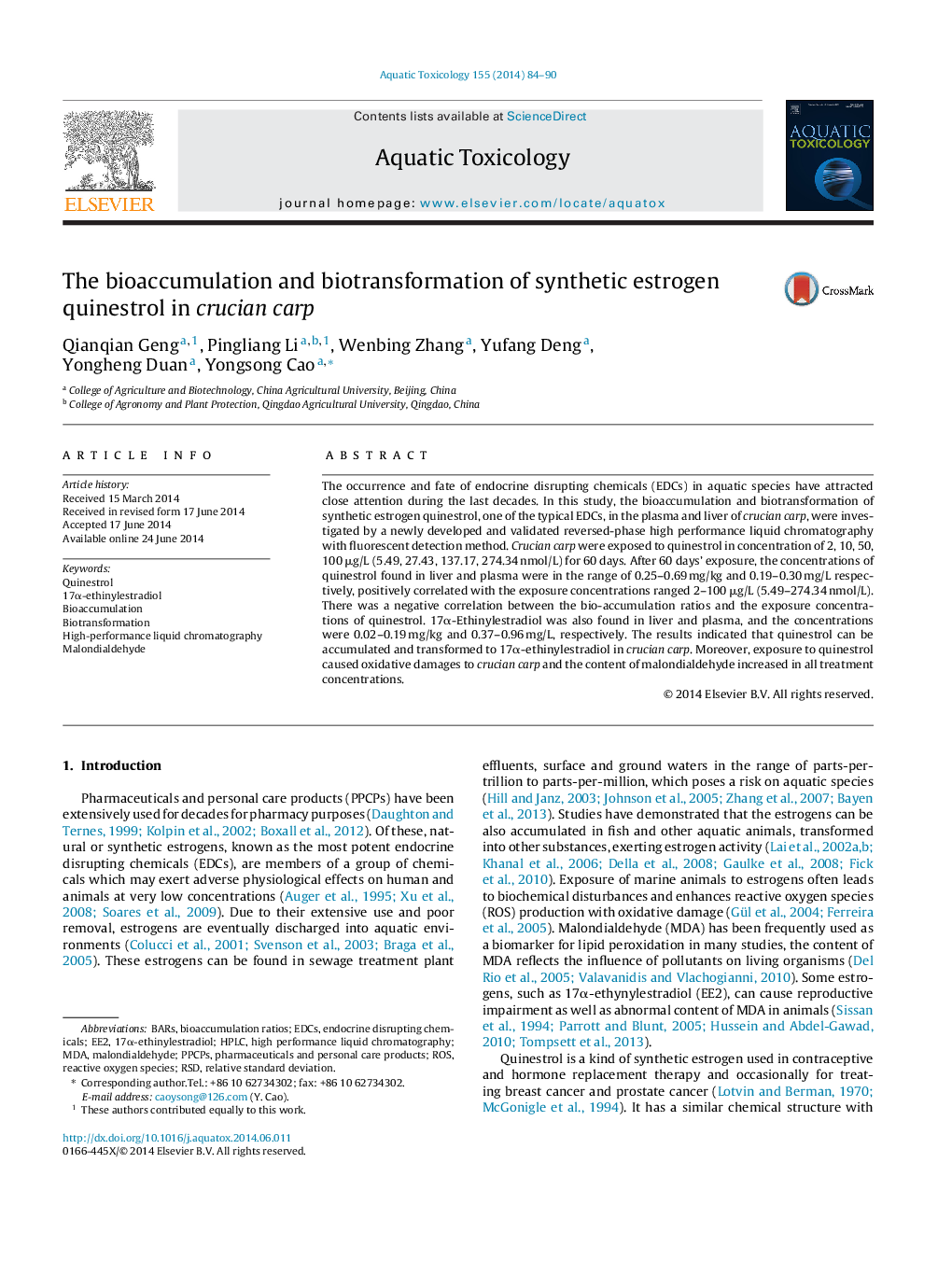| کد مقاله | کد نشریه | سال انتشار | مقاله انگلیسی | نسخه تمام متن |
|---|---|---|---|---|
| 4529161 | 1625950 | 2014 | 7 صفحه PDF | دانلود رایگان |
• A novel detection method was developed for determination of quinestrol and EE2.
• Quinestrol was firstly found to be biotransformed to EE2 in crucian carp.
• BARs of quinestrol were 3–100 and 6.9–185 in plasma and liver respectively.
• BARs were negatively correlated with the exposure concentrations of quinestrol.
• The contents of MDA were associated with the concentration of quinestrol.
The occurrence and fate of endocrine disrupting chemicals (EDCs) in aquatic species have attracted close attention during the last decades. In this study, the bioaccumulation and biotransformation of synthetic estrogen quinestrol, one of the typical EDCs, in the plasma and liver of crucian carp, were investigated by a newly developed and validated reversed-phase high performance liquid chromatography with fluorescent detection method. Crucian carp were exposed to quinestrol in concentration of 2, 10, 50, 100 μg/L (5.49, 27.43, 137.17, 274.34 nmol/L) for 60 days. After 60 days’ exposure, the concentrations of quinestrol found in liver and plasma were in the range of 0.25–0.69 mg/kg and 0.19–0.30 mg/L respectively, positively correlated with the exposure concentrations ranged 2–100 μg/L (5.49–274.34 nmol/L). There was a negative correlation between the bio-accumulation ratios and the exposure concentrations of quinestrol. 17α-Ethinylestradiol was also found in liver and plasma, and the concentrations were 0.02–0.19 mg/kg and 0.37–0.96 mg/L, respectively. The results indicated that quinestrol can be accumulated and transformed to 17α-ethinylestradiol in crucian carp. Moreover, exposure to quinestrol caused oxidative damages to crucian carp and the content of malondialdehyde increased in all treatment concentrations.
Journal: Aquatic Toxicology - Volume 155, October 2014, Pages 84–90
